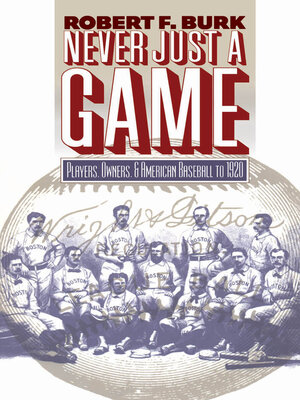
Sign up to save your library
With an OverDrive account, you can save your favorite libraries for at-a-glance information about availability. Find out more about OverDrive accounts.
Find this title in Libby, the library reading app by OverDrive.



Search for a digital library with this title
Title found at these libraries:
| Library Name | Distance |
|---|---|
| Loading... |
America's national pastime has been marked from its inception by bitter struggles between owners and players over profit, power, and prestige. In this book, the first installment of a highly readable, comprehensive labor history of baseball, Robert Burk describes the evolution of the ballplaying work force: its ethnocultural makeup, its economic position, and its battles for a place at the table in baseball's decision-making structure.
In the late nineteenth and early twentieth centuries, the growing popularity of baseball as a spectator sport and the dramatic upsurge of America's urban population created conditions that led to franchise competition, the development of rival leagues, and trade wars, in turn triggering boom-and-bust cycles, franchise bankruptcies, and league mergers. According to Burk, players repeatedly tried to use these circumstances to better their economic positions by playing one team off against another. Their successes proved short-lived, however, because their own internal divisions, exploited by management, undercut attempts to create collective-bargaining institutions. By 1920, owners still held the upper hand in the labor-management battle, but as today's sports pages show, owners did not secure a long-term solution to their labor problems.
In the late nineteenth and early twentieth centuries, the growing popularity of baseball as a spectator sport and the dramatic upsurge of America's urban population created conditions that led to franchise competition, the development of rival leagues, and trade wars, in turn triggering boom-and-bust cycles, franchise bankruptcies, and league mergers. According to Burk, players repeatedly tried to use these circumstances to better their economic positions by playing one team off against another. Their successes proved short-lived, however, because their own internal divisions, exploited by management, undercut attempts to create collective-bargaining institutions. By 1920, owners still held the upper hand in the labor-management battle, but as today's sports pages show, owners did not secure a long-term solution to their labor problems.







